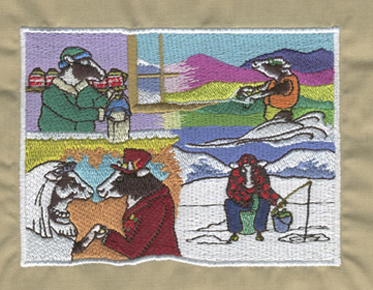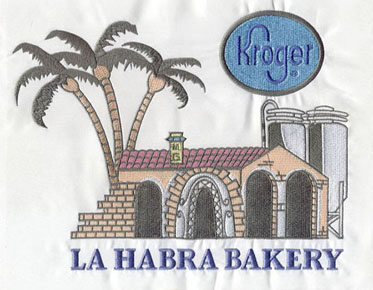About Vector Graphics and Their Uses
Have you ever heard of vector graphics? They are used in lots of different formats, such as designing websites and mobile apps. A vector image isn't like a raster image that you see with digital photographs. Raster images are made up of tiny dots or pixels, which can be enlarged or reduced in size without loss of quality. And when you use them to create something like a digital logo or add text to it, there's a good chance that your design will lose clarity and become pixelated. However, if you use vector graphics because it is generally made up of mathematical formulae instead of pixels then it means that the image will keep its intended form even when enlarging or reducing the size of the image. This makes it ideal for scaling up logos and other designs across many different devices
In short, a vector is a computer graphics format based on mathematics. Therefore, the lines, curves, shapes and colors of an image are mathematically defined so they can be scaled down in a larger format or any smaller format. These lines and curves are also called paths.
Vector images use a series of commands formed from mathematical statements that draw lines, curves or shapes in 2D or 3D space. These lines and curves are like drawings created by several connected points. That's why they can also be called geometry files.
You can identify a vector photo by looking at the format - SVG, EPS and AI.
Why is this important?
Vector graphics are important because they have many advantages preferred by graphic designers. First, they don't lose resolution no matter where you use them. So you can use vector images in billboards or posters without losing quality. Also, vector graphics are not that big. They are lightweight and small.
They are reusable, which is why you can copy them or create clones from them effortlessly. In the case of vector graphics, manipulation is also easy. However, these are not the only reasons why it is widely used by designers. Vector graphics are known for their versatile features that make them versatile. They look realistic, natural and precise.
So you see, vector graphics has versatility and multiple benefits for graphic designers as well as the graphic design industry. That's why it's the most important right now.
Vector and raster images
Both vector and raster are common types of imagery that designers use for different purposes. But what makes vector and raster images different from each other?
As mentioned earlier, a vector image consists of several connected points that form a line or curve. In contrast, raster images or bitmaps are created from individual pixels or small dots that use color and hue to make the image. That's why, when viewed as a point, it's nothing but color. But as a whole, it makes up an image.
Raster images are produced by digital cameras, scanning, or raster-based software. Their quality depends on pixels called resolution. The higher the pixels, the better the quality. Therefore, raster images are larger than vector images. In contrast, vector images are smaller and scalable in size.
When you zoom in on raster images, they lose quality. However, vector images do not lose their quality no matter how much you scale them. Therefore, raster images are not scalable and do not look as natural as vector images. That's why you can't use raster images for multiple purposes.
Raster file types are JPG, GIF, PSD, and TIF, while vector files are via AI, CDR, SVG. You can edit vector files with software like Illustrator, CorelDraw, Inkscape, etc. Instead, raster image editors are photo shops, GIMP, and other editing software. Vector images are easier to edit than raster images.
Get raster to vector conversion
Anyway, here we will learn more about the usage of vector graphics. So take a look -
Uses of vector graphics:
Logo
Logos are often designed with vector graphics because of their scalability. Since it allows you to scale up or down as needed, you don't have to worry about quality loss. Also, you can use the logo for billboards, business cards, posters and many more places. Therefore, a vector logo is most preferable as it needs to be clear, clean and professional.
Another reason to use vector graphics for logos is that they are very flexible. You can export your logo files to AI, PDF, SVG, or even raster formats like PNG, JPG, or GIF. They are easy to edit and don't require much space due to their small size. Finally, with vector logos, you don't need to worry about resolution.
Website
Vector graphics are widely used on websites. It gives the website a professional and stylish look. Also, web pages need to look equally full of quality, whether it's a computer or a mobile phone. With vector graphics, you can ensure that the visuals of your website improve. It also makes web pages load faster. Therefore, for websites, vector graphics are a good choice.
Illustration
If you are an illustrator and love to draw art, using vector graphics is a must for you. It allows you to draw cleanly and precisely. It also looks more professional and clear. Because of the excellent scalability of vector graphics, you can display them without losing their quality. So you can draw your art as vector graphics and digitally edit it if needed.
Billboard
The billboards you see around you were created using vector graphics. That's why they look remarkably clean. Because of the super scalability of vector graphics. They don't lose quality, even if it's the size of a billboard. Therefore, billboards are one of the most important designs of vector graphics.
Electronic games
In the early 1980s, vector graphics-based video games such as Warzone, Asteroid, Tempest, Tail Gunner and the first Star Wars games were introduced. They show the way of modern 3D gaming. While they didn't last long on arcades, there's no denying that they offer an amazing gaming experience with their clean and crisp visual graphics. Also, some text-based games use vector graphics for better visualization of text characters.
Book
Image-based books, children's books, comics, book covers, and many other designs rely heavily on vector graphics. The reason behind it is simple. It provides a clear look so you can get a great reading experience. Book covers use it to become more vibrant and eye-catching. Pictures and symbols created with vectors look better than raster images. Hence, vector graphics are used for books and their covers.
Print advertising
The use of vector graphics in print advertising has many benefits. The ads you see in brochures, newspapers, magazines and other printed materials are designed by Vector art. Since print ads need to have good visualizations, vector graphics are best for them.
Carton/animation
Vector animation or cartooning is another common use of vector graphics. It provides clear and smooth animations through its scalability and flexibility. Also, it takes up much less space than using bitmaps. This is why vector graphics are used to design cartoons or animations for a clear and realistic visual experience. However, you can design cartoon characters or any animation through vector art.
The album cover
The album cover of your favorite band is designed in vector graphics. Therefore, they look sharp and eye-catching. Without vector images, the cover design will look unprofessional and catchy when printed. Therefore, everything on the cover, from the small symbols to the text, is designed with vector images.
Movie poster
Similar to album covers, movie posters are designed through vector representation. Movie posters are an integral part of movie marketing campaigns. Wonderful and creative posters become extraordinary and remain in memory for a long time. Therefore, vector images are used to make them clean, smooth and sharp. Often, these posters need to be scaled up or down. That's why vector graphics are ideal for designing posters.
Shop sign
The moment you step out of the house, signs are everywhere. There is no point in using flags if they are not clean or visible. To avoid using vector art to design them. Therefore, they can be seen precisely from any distance. So road signs, open/close signs, dollar signs, warning signs, stop signs and all other signs are created with vector art.
Printing
In the printing industry, vectorized images are widely used. Book covers, magazine covers, pages, product labels, newspapers are all designed in vector format. Designs have a better look than bitmaps due to the clear visibility and scalability of their graphic types. As such, it is one of the many most common uses of vector illustration.
Embroidery
You can get embroidery files converted from vector files. In practice, for computer embroidery, vector files are mainly used. Likewise, you can convert embroidery files to vector files. So, like many other uses of vector images, the embroidery industry relies on it.
So, as you can see, the vector image format has multiple uses and multiple advantages. From graphic designers to schoolboys, everyone can use vector art to design their project materials.
Eagle Digitizing
offer to convert your art projects created in Illustrator or Photoshop to a
vector format, with excellent quality. You can get the best vector conversion service for your project at a cheap cost with
us.


